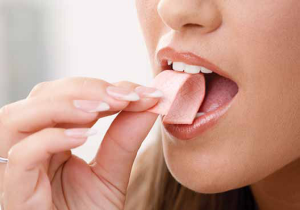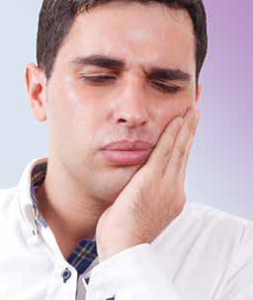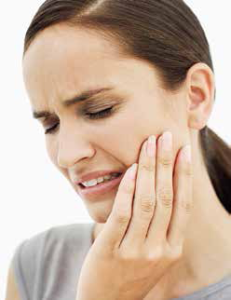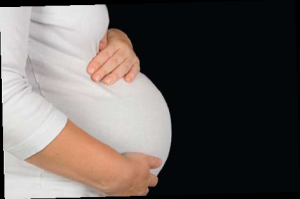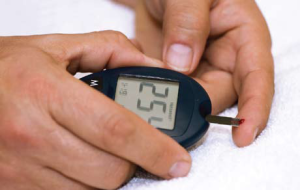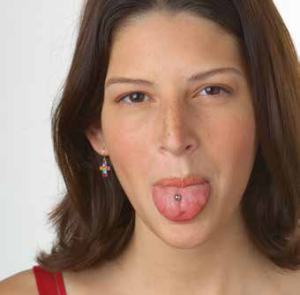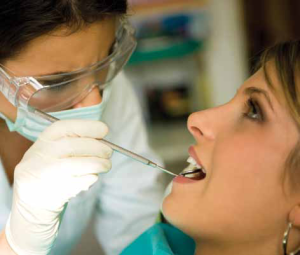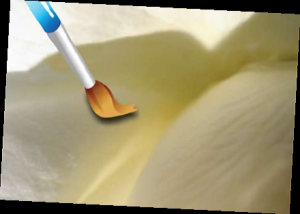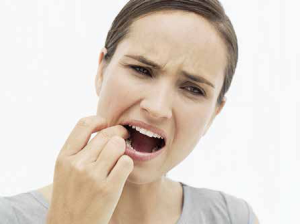Patient Instructions
Patient Instructions
- Post-Op Instructions Extractions
- Wisdom Tooth Removal
- Caring for your Dentures
- Removable Orthodontic Appliance
Post-Op Instructions Extractions
Post-Op Instructions Extractions : Follow these instructions carefully to ensure the successful healing of your tooth extraction.
When to call us:
It is normal to experience some discomfort for several days after a tooth extraction, but call us right away If you have:
- Heavy or increased bleeding
- Pain or swelling that increases or continues beyond two or three days
- A bad taste or odor in your mouth
- A reaction to the medication
During the first 24 hours
It is important that a blood clot forms on the extraction site to stop bleeding, reduce pain, and speed healing. To protect the clot and avoid the pain of dry socket:
- Bite on a gauze pad firmly for 30-60 minutes. Blood and saliva mix in the mouth and make it look like there is more bleeding than there really is. Some oozing is normal; however, after 1 hour, repeat with a clean gauze pad if oozing is profuse. The site could ooze for as long as 24 hours.
- Don’t spit, and don’t suck on candies or through a straw.
- Don’t rinse your mouth, and don’t brush or floss next to the site.
- Don’t smoke or use tobacco. Avoid tobacco for at least 72 hours because it slows healing.
- Don’t sneeze or cough, so have sinus or allergy medication on hand if necessary.
- Limit yourself to calm activities, and elevate your head with pillows when you lie down to reduce bleeding.
- Don’t drink hot, carbonated, or alcoholic drinks, and avoid hot or spicy foods.
To control discomfort, take pain medication before the anesthetic has worn off or as recommended.
To keep swelling to a minimum, use an ice bag over the area, 20 minutes on and 20 minutes off.
When the numbness has worn off completely, drink lots of fluids and eat only soft nutritious foods, chewing on the opposite side.
After the first 24 hours
Begin to eat normally as soon as it’s comfortable.
Resume brushing and flossing, but clean gently around the site for about a week.
If antibiotics were prescribed, continue to take them for the indicated length of time, even if all symptoms and signs of infection are gone.
Reduce soreness or swelling by applying moist heat. Swelling usually starts to go down after 48 hours.
Further reduce swelling by rinsing your mouth very gently with warm salt water. Use about one teaspoon of salt per glass of warm water. Rinse two to three times a day for the week following the extraction.
Instructions After Wisdom Tooth Removal
The Wisdom Tooth Removal of impacted teeth is a serious surgical procedure. Post-operative care is very important. Unnecessary pain and the complications of infection and swelling can be minimized if the instructions are followed carefully.
Immediately Following Surgery:
- The gauze pad placed over the surgical area should be kept in place for a half hour. After this time, the gauze pad should be removed and discarded.
- Vigorous mouth rinsing or touching the wound area following surgery should be avoided. This may initiate bleeding by causing the blood clot that has formed to become dislodged.
- Take the prescribed pain medications as soon as you begin to feel discomfort. This will usually coincide with the local anesthetic becoming diminished.
- Restrict your activities the day of surgery and resume normal activity when you feel comfortable.
- Place ice packs to the sides of your face where surgery was performed. Refer to the section on swelling for explanation.
- NO SMOKING UNDER ANY CIRCUMSTANCES FOR 72 HRS…DON’T DO IT!!
Bleeding:
A certain amount of bleeding is to be expected following surgery. Slight bleeding, oozing, or redness in the saliva is not uncommon. Excessive bleeding may be controlled by first rinsing or wiping any old clots from your mouth, then placing a gauze pad over the area and biting firmly for thirty minutes. Repeat if necessary. If bleeding continues, bite on a moistened tea bag for thirty minutes. The tannic acid in the tea bag helps to form a clot by contracting bleeding vessels. To minimize further bleeding, do not become excited, sit upright, and avoid exercise. If bleeding does not subside, call for further instructions.
Swelling:
The swelling that is normally expected is usually proportional to the surgery involved. Swelling around the mouth, cheeks, eyes and sides of the face is not uncommon. This is the body’s normal reaction to surgery and eventual repair. The swelling will not become apparent until the day following surgery and will not reach its maximum until 2-3 days post-operatively. However, the swelling may be minimized by the immediate use of ice packs. Two baggies filled with ice, or ice packs should be applied to the sides of the face where surgery was performed. The ice packs should be left on continuously while you are awake. After 36 hours, ice has no beneficial effect. If swelling or jaw stiffness has persisted for several days, there is no cause for alarm. This is a normal reaction to surgery. Thirty-six hours following surgery, the application of moist heat to the sides of the face is beneficial in reducing the size of the swelling.
Pain:
For moderate pain, one or two tablets of Tylenol or Extra Strength Tylenol may be taken every three to four hours or Ibuprofen; (Motrin or Advil) two-four 200mg tablets may be taken every 3-4 hours.
For severe pain, take the tablets prescribed as directed. The prescribed pain medicine will make you groggy and will slow down your reflexes. Do not drive an automobile or work around machinery. Avoid alcoholic beverages. Pain or discomfort following surgery should subside more and more every day. If pain persists, it may require attention and you should call the office.
Diet:
After general anesthetic or I.V. sedation, liquids should be initially taken. Do not use straws. Drink from a glass. The sucking motion can cause more bleeding by dislodging the blood clot. You may eat anything soft by chewing away form the surgical
sites. You should prevent dehydration by taking fluids regularly. Your food intake will be limited for the first few days. You should compensate for this by increasing your fluid intake. At least 5-6 glasses of liquid should be taken daily.
Keep the mouth clean:
No rinsing of any kind should be peformed until the day following surgery. You can brush your teeth the night of surgery but rinse gently. Two days after surgery you should begin rinsing at least 5-6 times a day especially after eating with a cup of warm water mixed with a teaspoon of salt.
Discoloration:
In some cases, discoloration of the skin follows swelling. The development of black, blue, green, or yellow discoloration is due to blood spreading beneath the tissues. This is a normal post-operative occurance, which may occur 2-3 days post-operatively. Moist heat applied to the area may speed up the removal of the discoloration.
Antibiotics:
If you have been placed on antibiotics, take the tablets or liquid as directed. Antibiotics will be given to help prevent infection. Discontinue antibiotic use in the event of a rash or other unfavorable reaction. Call the office if you have any questions.
Other Complications:
- If numbness of the lip, chin, or tongue occurs there is no cause for alarm. As stated before surgery, this is usually temporary in nature. You should be aware that if your lip or tongue is numb, you could bite it and not feel the sensation. So be careful. Call our office if you have any questions.
- Slight elevation of temperature immediately following surgery is not uncommon. If the temperature persists, notify the office. Tylenol or ibuprofen should be taken to reduce the fever.
- You should be careful going from the lying down position to standing. You were not able to eat or drink prior to surgery. It was also difficult to take fluids. Taking pain medications can make you dizzy. You could get light headed when you stand up suddenly. Before standing up, you should sit for one minute then get up.
- Occasionally, patients may feel hard projections in the mouth with their tongue. They are not roots, they are the bony walls which supported the tooth. These projections usually smooth out spontaneously. If not, our doctors can remove them.
- If the corners of your mouth are stretched, they may dry out and crack. Your lips should be kept moist with an ointment such as Vaseline.
- Sore throats and pain when swallowing are not uncommon. The muscles get swollen. The normal act of swallowing can then become painful. This will subside in 2-3 days.
- Stiffness (Trimus) of the jaw muscles may cause difficulty in opening your mouth for a few days following surgery. This is a normal post-operative event which will resolve in time.
Sutures are placed the area of surgery to minimize post-operative bleeding and to help healing. Sometimes they become dislodged, this is no cause for alarm. Just remove the suture form your mouth and discard it. The sutures will be removed approximately one week after surgery. The removal of sutures requires no anesthesia or needles. It takes only a minute or so, and there is no discomfort associated with this procedure. So it’s really nothing to worry about.
The pain and swelling should subside more and more each day following surgery. If your post-operative pain or swelling worsens or unusual symptoms occur call my office for instructions.
There will be a cavity where the tooth was removed. The cavity will gradually over the next month fill in with the new tissue. In the mean time, the area should be kept clean especially after meals with salt water rinses or a toothbrush.
Your case is individual, no two mouths are alike. Do not accept well intended advice from friends. Discuss your problem with the persons best able to effectively help you: Our doctors or your family dentist.
Brushing your teeth is okay – just be gentle at the surgical sites.
A dry socket is when the blood clot gets dislodged prematurely from the tooth socket. Symptoms of pain at the surgical site and even pain to the ear may occur 2-3 days following surgery. Call the office if this occurs.
Caring for your Dentures
Denture care:
Now that you have received your denture, it is important to follow these recommendations to ensure its success.
Chewing and eating:
To protect your denture, avoid chewing Ice or other hard objects.
If small pieces of food work their way under your denture while you eat, simply remove your denture and rinse it with water.
Brushing and flossing:
Brush your tongue, gums, palate, and any remaining teeth at least twice a day to keep them free of plaque and bacteria. Brushing also massages the gums and keeps your breath fresh. In addition we may recommend dental floss, mouthrinses, or other cleaning aids.
Cleaning your denture:
Clean your denture over a sink full of water to prevent your denture from breaking if it is accidentally dropped. Use a denture brush and a denture cleaning product at least once a day to thoroughly clean all of the surfaces of your denture. We may recommend special denture cleansers or brushes.
Also, soak your denture periodically in a commercial soaking solution, or, if your denture has no metal parts, you can soak it in a solution of half white vinegar and half water. After soaking, rinse dentures thoroughly in cool water.
Sleeping and storing your denture:
Unless we tell you otherwise, remove your denture for sleeping or for atleast 6 to 8 hours a day. Store your denture in water or a soaking solution whenever it is out of your mouth, so it does not dry out.
When to call us:
Call us right away if your denture breaks, cracks, or chips, or if a tooth becomes loose, so we can properly repair it. Also call us if your bite feels uneven, your dentures become loose, you have sore spots, irritation, swelling, or discomfort, or if you have any questions or concerns.
Page Tag : Caring Dentures
Removable Orthodontic Appliance
Unlike fixed braces, Removable Orthodontic Appliance braces have to be taken out to be cleaned and treatments such as Invisalign are worn 20-22 hours a day. The patient is required to be strict with these timings, as if they are surpassed, the treatment can be jeopardised.
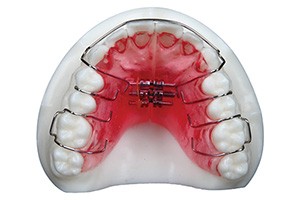
Removable appliances are easier to clean as it can be taken out in order to clean between the nooks and crannies where bacteria and food is likely to build up. You can also still enjoy the foods that you like, so long as you remove your brace.
Removable appliances work by simple tipping movements of the crowns of the teeth about a fulcrum close to the middle of the tooth. They also allow differential eruption of teeth, for example by using bite planes. They differ from fixed appliances, which are capable of complex movements of multiple teeth, including bodily movement, root torque and rotation.
Instructions For Patients With Removable Orthodontic Appliance
Worn 24 hrs per day
EXCEPTION:
- Remove for cleaning appliance
- Remove for brushing teeth
- Remove for active sports and swimming.
Upon Insertion:
- Amount of Saliva increased
- Difficulty Speaking for a few days
- Clean appliance with a Brush.
- Put in proper case when not in mouth.
- Never wrap in Kleenex.
- Keep Away from pets.
Appointment :
Once per month. OR as prescribed by Dr.
Adjustment by Parent:
- One turn twice per week,
- Wednesday and Saturday.
- Keep the record.


